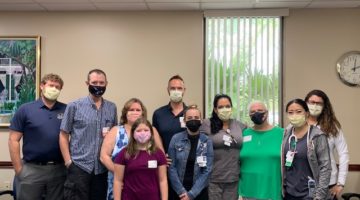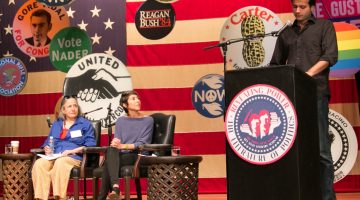CULTURE VULTURE
‘The Silent Wings’ and farewell to a hero
Cinema is not my forte; while I love film, and have been known to take in a triple feature at the Tropic, I wisely leave the criticism to our own Ian Brockway (and to Shirrel Rhodes at the daily paper). But my email friend, airline Capt. Lewis DeWitt (ret., Bexley High School ’54), sent me — entirely by accident — an astonishing YouTube film that entranced me for two full hours last night.
“The Silent Wings” is a full-length documentary about the U.S. glider pilots of whom almost nothing is known and who contributed mightily to our victory in World War Two. I had never heard of them and, while hardly a WW II buff, I’ve certainly read and heard and seen movies about the Air Force of the era, with whom they worked in concert; the regular, powered planes had to tow the relatively flimsy aircraft to within gliding distance of their tactical targets, where they delivered supplies, vehicles and troops (up to 12 per glider, plus pilot and co-pilot, who were the focus of the film).
The movie was produced to educate the public about the bravery, skills and effectiveness of these unsung heroes. We learn of their recruitment, training, missions and heroism. The battle footage is sometimes raw and the first-person accounts of a trio of surviving pilots sometimes wrenching. Nothing was as moving, however, as the relatively happy ending.
Familiar faces and voices in the film were the late Edward R. Murrow and Andy Rooney, who were war correspondents who sometimes rode in gliders to cover the various Allied campaigns. But equally effective were three ordinary vets, one of whom wrote a book about that chapter of WW II history. See the documentary at http://www.youtube.com/watch?v=jsAKWma3zbY My lone problem with this fascinating history lesson is that 10 or 20 minutes could easily have been edited out without affecting the impact of the story.
Last night, as I write this, I watched The Silent Wings on my computer screen from 9-something until 11:55 p.m. That morning had been given over to the funeral service at Congregation B’nai Zion of community role model, cultural supporter and philanthropist Sheldon Mermelstein. He was almost 92. We know that, not terribly long ago, he traveled to France to be awarded France’s highest honor, the Legion of Honor, for his service during WW II. Sgt. Mermelstein’s achievements, as he fought in virtually every major battle across Europe, from D-Day on, have never been touted locally, but they had to be heroic.
In his eulogy, Mermelstein’s friend and counselor, Peter Rysman, noted that Sheldon loved to talk and was not shy about offering his advice and opinions and wisdom. The one thing he wouldn’t talk about, however, was his experience in the war. Watching the battle footage in “The Silent Wings” less than 12 hours after hearing that comment, I understood perfectly. It was not something deliberately to relive, something willingly to revisit. The men in the documentary from time to time could barely hold back the emotion.
Sheldon Mermelstein’s loss is felt — not just by his classy, stylish and very kind wife, Deborah, not just by his children and grandchildren, not just by his synagogue and his community. When much-loved and admired heroes die, military or civilian, they take tiny, little pieces of our world (and often bits of our hearts) with them. Sheldon Mermelstein did. Judith Harrow did. Jay Gogan did. Patsy O’Neal Morrow did.
May remembering them be a comfort and a blessing.
[livemarket market_name="KONK Life LiveMarket" limit=3 category=“” show_signup=0 show_more=0]



No Comment